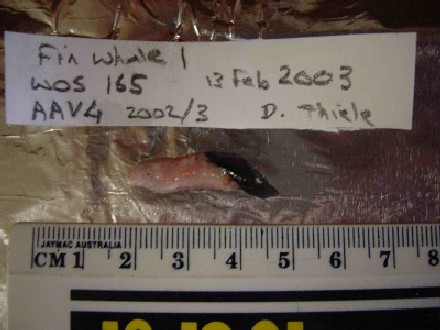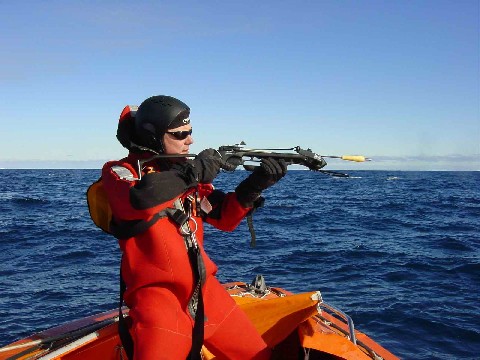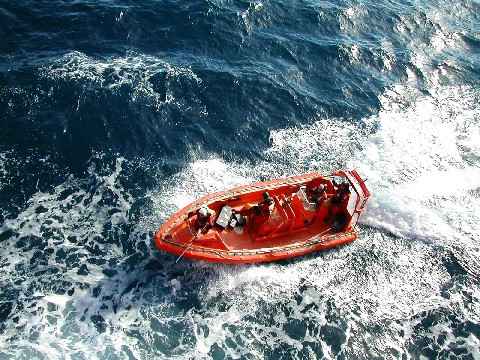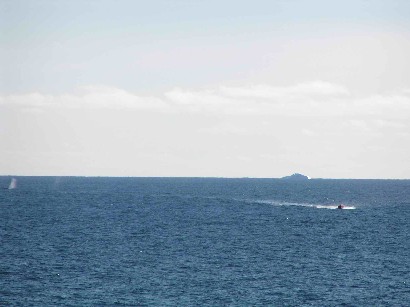Tissue biopsy sampling of whales & dolphins
Very few genetic samples of cetaceans are available from the Antarctic, yet the conservation and management of these species, which are still recovering from over exploitation through historic whaling practices, is a high priority for Australia and other nations, plus the International Whaling Commission. The International Whaling Commission Scientific Committee has recommended the use of tissue biopsy on cetaceans as the most effective and least invasive method of obtaining the tissue samples required for molecular genetic and pollutant studies.

Biopsy sample from fin whale
Tissue biopsy is a commonly used technique of obtaining skin and blubber samples from cetaceans at sea. A crossbow is used to fire purpose-made darts, with special tips, at the side or back of the animal. The darts are designed so that on impact with the animal they penetrate through the skin and a couple of centimetres of blubber and then pop back out. They do not penetrate anywhere near the muscle of the animal. The dart has a float attached to one end so that when it pops out of the whale it floats and can easily be retrieved from the sea. Tissue biopsy with a crossbow is used throughout the oceans of the world to obtain these samples, and animals rarely show any response, besides the occasional flick of the tail, to being darted. The overwhelming majority of animals that have been darted continue behaving as they were before darting and re-approach the small boat or ship. Dr. Vic Peddemors has extensive experience in collecting cetacean tissue biopsy samples off southern Africa and will be responsible for this program during the voyage.

Dr. Vic Peddemors using cross-bow for tissue samples.
Although photo-identification of individual animals has allowed considerable insight into the populations of whales annually visiting the Australian coastline, little is known of the stock structures of the whales in the waters off the Australian Antarctic territories. Pictures suitable for photo-identification studies will be taken prior to any approaches for biopsy sampling; however, they are unlikely to form a large databank suitable for stock analyses, primarily due to the cost of any dedicated Antarctic photo-ID program. Molecular genetic studies have therefore proven to be the most cost-effective and rapid method of determining Antarctic whale stock dynamics suitable for conservation and management.
Tissue biopsy therefore needs to be conducted to collect very small skin and blubber samples from cetaceans in the Antarctic in order to allow molecular analysis (of the skin sample) for determination of the stock structure, sex of the animal sampled, society dynamics and other similarities and differences between individuals and stocks.
Blubber samples from Antarctic cetaceans are also rare. The samples collected through this research program will provide material for a range of pollutant analyses that allow us to determine the present day levels of pollutants in these species. Changing levels of pollutants in individuals and between sexes and populations allow us to determine more accurately the real effects of pollutants as they respond to the activities of the animal. Pollutant studies from blubber taken on the breeding grounds (e.g., humpback whales off Australia) require comparison with samples from the same species and stocks on the feeding grounds, when the effect of annual migration can concentrate pollutant levels in these animals.
It is therefore believed that this program will substantially contribute to our understanding of several issues critical to the conservation and management of Antarctic whales.

